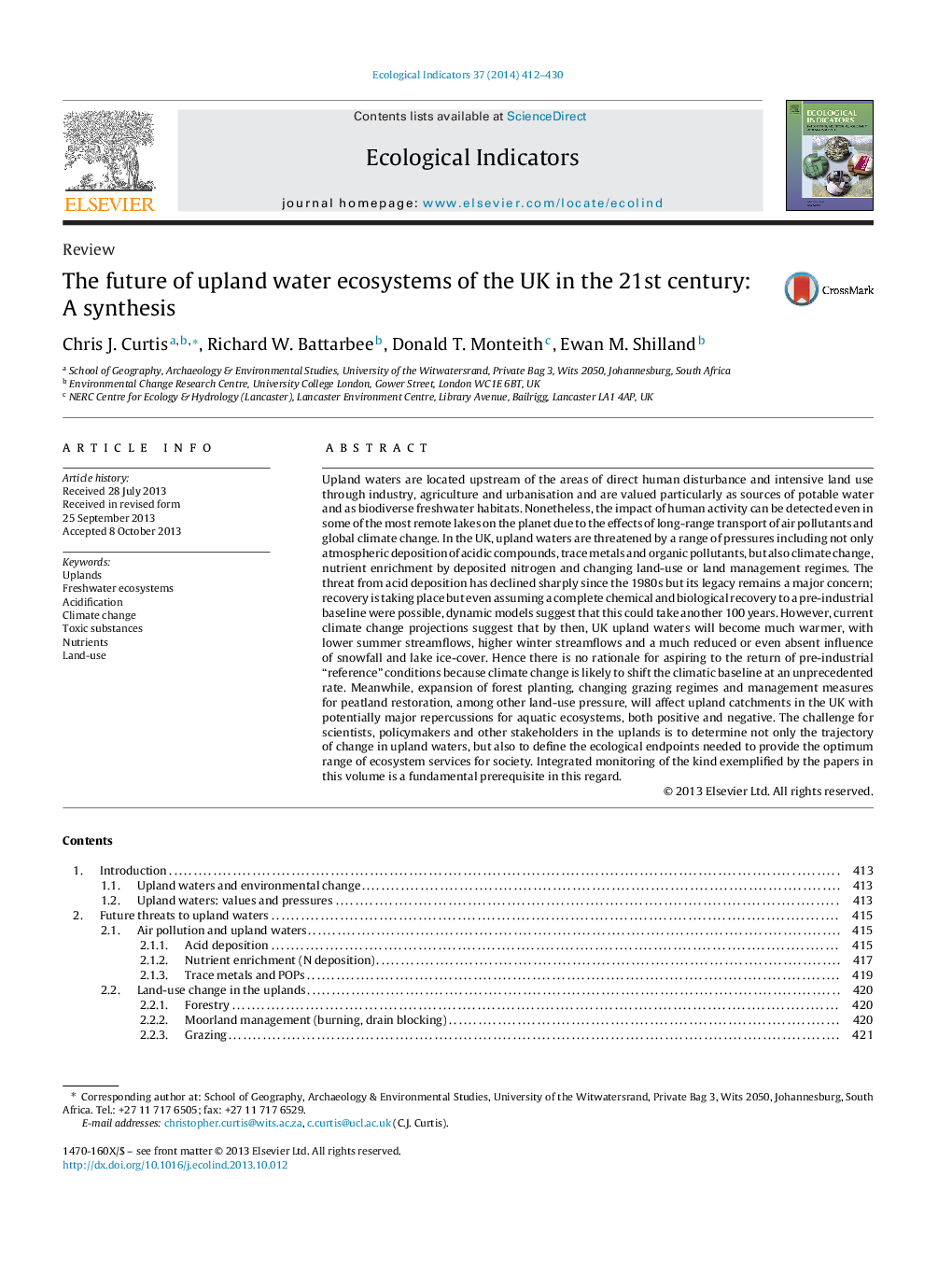| کد مقاله | کد نشریه | سال انتشار | مقاله انگلیسی | نسخه تمام متن |
|---|---|---|---|---|
| 6295226 | 1303131 | 2014 | 19 صفحه PDF | دانلود رایگان |
عنوان انگلیسی مقاله ISI
The future of upland water ecosystems of the UK in the 21st century: A synthesis
دانلود مقاله + سفارش ترجمه
دانلود مقاله ISI انگلیسی
رایگان برای ایرانیان
کلمات کلیدی
موضوعات مرتبط
علوم زیستی و بیوفناوری
علوم کشاورزی و بیولوژیک
بوم شناسی، تکامل، رفتار و سامانه شناسی
پیش نمایش صفحه اول مقاله

چکیده انگلیسی
Upland waters are located upstream of the areas of direct human disturbance and intensive land use through industry, agriculture and urbanisation and are valued particularly as sources of potable water and as biodiverse freshwater habitats. Nonetheless, the impact of human activity can be detected even in some of the most remote lakes on the planet due to the effects of long-range transport of air pollutants and global climate change. In the UK, upland waters are threatened by a range of pressures including not only atmospheric deposition of acidic compounds, trace metals and organic pollutants, but also climate change, nutrient enrichment by deposited nitrogen and changing land-use or land management regimes. The threat from acid deposition has declined sharply since the 1980s but its legacy remains a major concern; recovery is taking place but even assuming a complete chemical and biological recovery to a pre-industrial baseline were possible, dynamic models suggest that this could take another 100 years. However, current climate change projections suggest that by then, UK upland waters will become much warmer, with lower summer streamflows, higher winter streamflows and a much reduced or even absent influence of snowfall and lake ice-cover. Hence there is no rationale for aspiring to the return of pre-industrial “reference” conditions because climate change is likely to shift the climatic baseline at an unprecedented rate. Meanwhile, expansion of forest planting, changing grazing regimes and management measures for peatland restoration, among other land-use pressure, will affect upland catchments in the UK with potentially major repercussions for aquatic ecosystems, both positive and negative. The challenge for scientists, policymakers and other stakeholders in the uplands is to determine not only the trajectory of change in upland waters, but also to define the ecological endpoints needed to provide the optimum range of ecosystem services for society. Integrated monitoring of the kind exemplified by the papers in this volume is a fundamental prerequisite in this regard.
ناشر
Database: Elsevier - ScienceDirect (ساینس دایرکت)
Journal: Ecological Indicators - Volume 37, Part B, February 2014, Pages 412-430
Journal: Ecological Indicators - Volume 37, Part B, February 2014, Pages 412-430
نویسندگان
Chris J. Curtis, Richard W. Battarbee, Donald T. Monteith, Ewan M. Shilland,